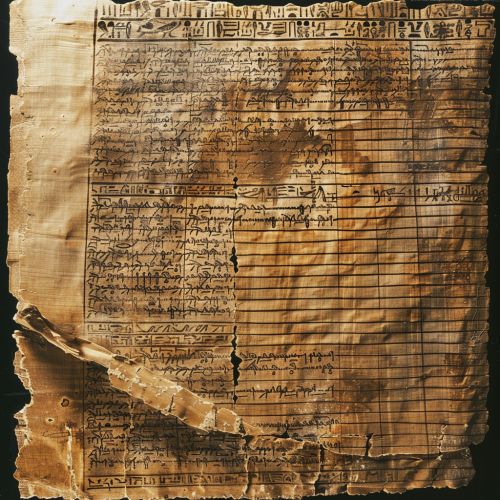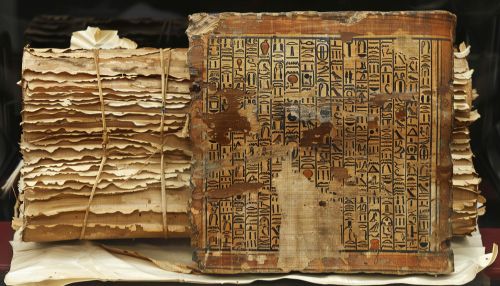Ebers Papyrus
Overview
The Ebers Papyrus is one of the most significant and extensive preserved medical documents from ancient Egypt, as well as one of the oldest known medical texts in existence. Named after its original purchaser, German Egyptologist Georg Ebers, the papyrus is believed to have been written circa 1550 BC, during the reign of Pharaoh Amenhotep I of the 18th dynasty.


Description
The Ebers Papyrus is a scroll measuring approximately 20 meters long and 30 centimeters wide, containing 108 columns of text. It is written in hieratic script, a cursive form of hieroglyphics used in ancient Egypt, and is organized into paragraphs with titles. The text is primarily written from right to left, with the papyrus unrolled horizontally.
Content
The Ebers Papyrus contains over 700 remedies and magical formulas for a wide array of ailments, including diseases, injuries, and conditions affecting different parts of the body. The papyrus also includes a section on surgery, with detailed instructions on suturing wounds and dealing with dislocations and fractures.
The text demonstrates an understanding of the existence of the circulatory system, with references to the heart as the center of the body's blood supply. It also contains the earliest known references to tumors, specifically tumors of the breast.
Significance
The Ebers Papyrus provides valuable insights into the medical practices and knowledge of ancient Egypt. It reveals that the Egyptians had a surprisingly advanced understanding of anatomy and disease, including knowledge of the circulatory system and the recognition of various diseases and conditions.
